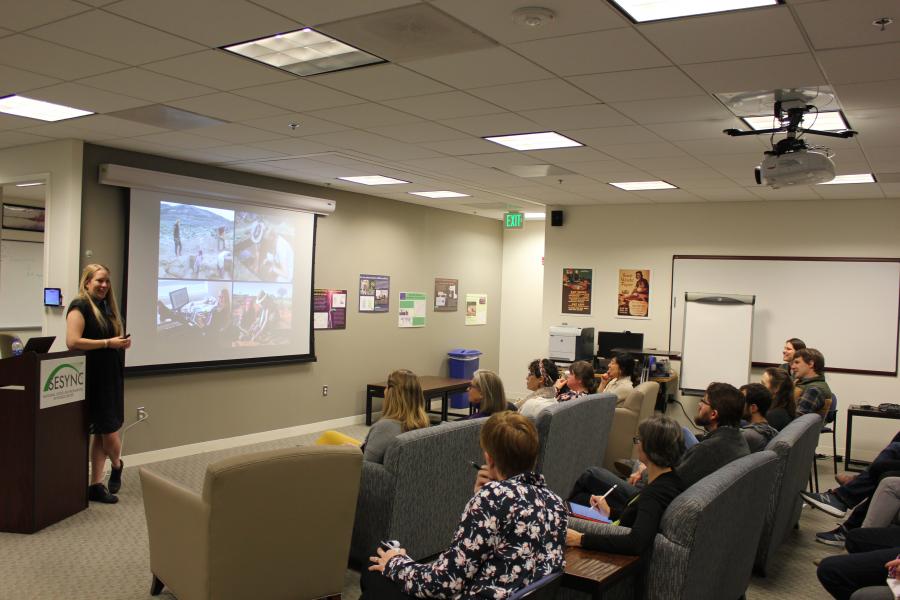
When using the archeological past to examine sustainability, humans provide key functions in environments they inhabit.
The absence of humans in a landscape can have dramatic effects. Removing them from ecosystems can allow forests to advance, for example, but it can also cause human-dependent species to become extinct.
In her seminar at the National Socio-Environmental Synthesis Center (SESYNC), Dr. Stefani Crabtree discussed how she explored past human-environment interactions as experiments in sustainability, where the archaeological record could improve the understanding of more resilient interactions with environments today. Crabtree, a computational archaeologist, complexity scientist and ethnographer at Utah State University, the Center for Research and Interdisciplinarity in Paris, the Santa Fe Institute, and Crow Canyon Archaeological Center, discussed her work in archaeoecology in southwest Colorado and Australia, including her newest research, “Subsistence Transitions and the Simplification of Ecological Networks in the Western Desert of Australia,” published February 8 in Human Ecology.
Crabtree explained that benefits of knowledge learned from archaeoecology are multi-scale, from individual actors who want to know an area deeply, to government and policymakers who want to deepen their understanding of ways in which people can interact with ecosystems in ways that are sustainable and resilient, as well as how ecosystems impact people. Among her innovations is new methods in food web modeling, including ways to integrate archaeological and paleoenvironmental data to understand modern challenges. Small choices, such as hunting or farming, and individual interactions lead to large, overarching structures and dramatic impacts on the environment, she explained.
Crabtree said that learning from archeology and anthropology as a way to understand our place in the global ecosystem is more essential than ever. “People have dealt with climate change, migration and violence before. We are not alone. Our ancestors dealt with the same things,” she said. “Archeology is a laboratory to understand how people respond to the past.” Computational archeologists can now access data and synthesize data that has previously been impossible to analyze, she explained, adding that this helps us better understand today’s human-environment interactions; for example, the effect of climate change on Syrian refugees today.
In a recent New York Times article, Crabtree discussed the concept of a human-free wilderness related to her research in Australia’s Western Desert and how, for instance, the small fires used by aboriginal Australian communities for hunting were vital for sustaining wild species. “By examining how an Aboriginal Australian community have shaped their land through traditional hunting, they present an example where it’s not all bad to have humans around,” the Times wrote.
In her seminar, Crabtree discussed how that research extends to American Indians, whose indigenous knowledge has developed over generations to benefit biodiversity and how traditional ecological knowledge sees humans as actors in the forces of change rather than separate from the environment.
The SESYNC Seminar is held on Tuesdays throughout the academic calendar year. For more information about the Spring 2019 lineup of speakers, please see our flyer.